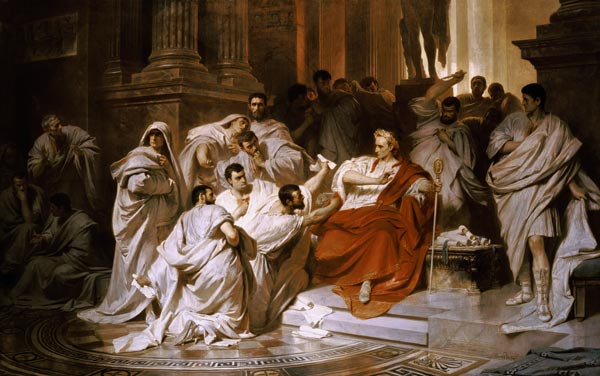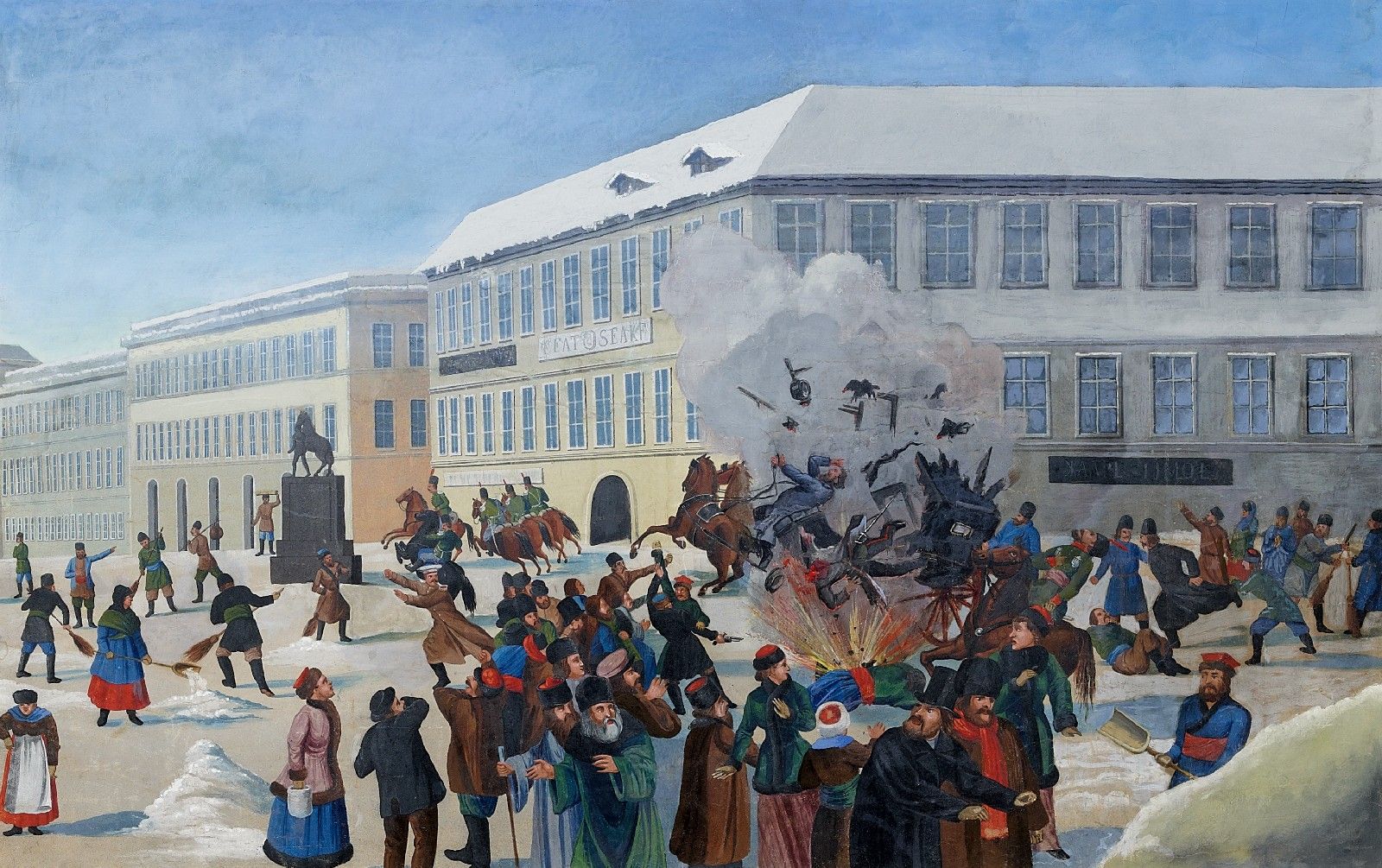Happy Tyrannicide Day (observed)! To-day, March 15th, commemorates the assassination of two notorious tyrants.
On the Ides of March in 2017 CE, we mark the 2,060th anniversary — give or take the relevant calendar adjustments — of the death of Gaius Julius Caesar, the ambitious raider, war-monger, ruthless mass murderer, slave-trader, usurper and military dictator, who rose to power in the midst of Rome’s most violent civil wars, who boasted of butchering and enslaving two million Gauls, who set fire to Alexandria, who battered and broke through every last restraint that lingered in Roman politics and civil society against unilateral military rule and executive power. Driving his enemies before him in triumphs, having himself proclaimed Father of His Country, dictator perpetuo, censor, supreme pontiff, imperator, the King of Rome in all but name, taking unilateral command of all political power in Rome and having his images placed among the statues of the kings of old and even the gods themselves, he met his fate at the hands of a group of republican conspirators. Led by Marcus Junius Brutus and Gaius Cassius Longinus, calling themselves the Liberators
, on 15 March 44 BCE, they surrounded Caesar and put an end to his reign of terror by stabbing him to death on the floor of the Senate.
By a coincidence of fate, or a work of Nemesis, March 13th also marks the anniversary (the 136th& this year) of the assassination of Alexander II Nikolaevitch Romanov, the self-styled Imperator, Caesar and Autocrat of All the Russias. A group of Narodnik conspirators, acting against the ongoing repression and violence that they faced at the hands of the autocratic state, put an end to the Czar’s reign by throwing grenades underneath his carriage on March 13th, 1881 CE, in an act of propaganda by the deed.
In honor of the coinciding events, the Ministry of Culture in this secessionist republic of one, together with fellow republics and federations of the free world, proclaims the 15th of March Tyrannicide Day (observed), a commemoration of the death of two tyrants at the hands of their enraged victims, people choosing to defend themselves even against the violence and oppression exercised by men wrapped in the bloody cloak of the State, with the sword of the Law and in the name of their fraudulent claims to higher authority. It’s a two-for-one historical holiday, kind of like President’s Day, except cooler: instead of another dull theo-nationalist hymn on the miraculous birth of two of the canonized saints of the United States federal government, we have instead one day on which we can honor the memory, and note the cultural celebrations, of men and women who defied tyrants’ arbitrary claims to an unchecked power that they had neither the wisdom, the virtue, nor the right to wield against their fellow creatures.
There are actually many reasons to set aside tyrannicide as a political tactic. After all, these two famous cases each ended a tyrant but not the tyrannical regime; Alexander II was replaced by the even more brutal Alexander III, and Julius Caesar was replaced by his former running-dogs, one of whom would emerge from the carnage that followed as Imperator Gaius Julius Son-of-God Caesar Octavianus Augustus, beginning the long Imperial nightmare in earnest. But it’s also important to recognize that these failures were strategic failures, not moral ones; the regicides were doing what they had every right to do, even though their acts of resistance proved ultimately suicidal.
What we celebrate on the Ides of March is not the practice of tyrannicide as a strategy, but rather the reality of tyrannicide as a moral fact. Putting a diadem on your head and wrapping yourself in the blood-dyed robes of the State confers neither the virtue, the knowledge, nor the right to rule over anyone, anywhere, for even one second, any more than you had naked and alone. Tyranny is nothing more and nothing less than organized crime executed with a pompous sense of entitlement and a specious justification; the right to self-defense applies every bit as much against the person of some self-proclaimed sovereign
as it does against any other two-bit punk who might attack you on the street.
Every victory for human liberation in history — whether against the crowned heads of Europe, the cannibal-empires of modern Fascism and Bolshevism, or the age-old self-perpetuating oligarchies of race and sex — has had these moral insights at its core: the moral right to deal with the princes and potentates of the world as nothing more and nothing less than fellow human beings, to address them as such, to challenge them as such, and — if necessary — to resist them as such.
Thus always to tyrants. And many happy returns!
Beware the State. Celebrate the Ides of March!
 Rad Geek, to-day:
Rad Geek, to-day:






